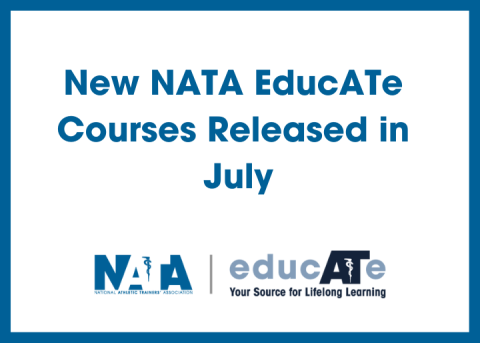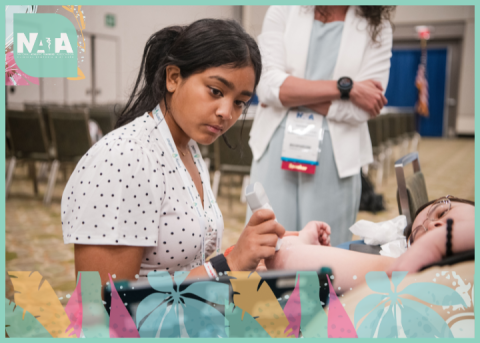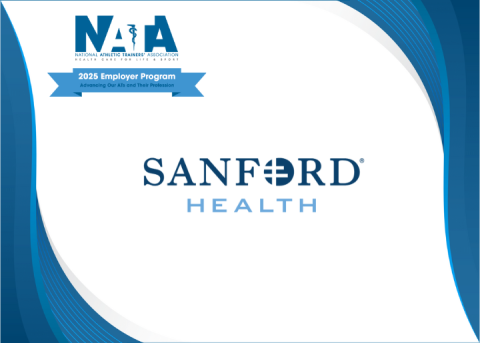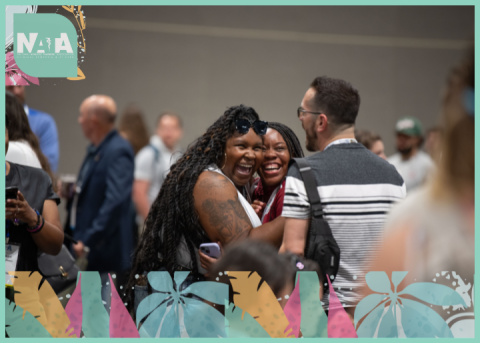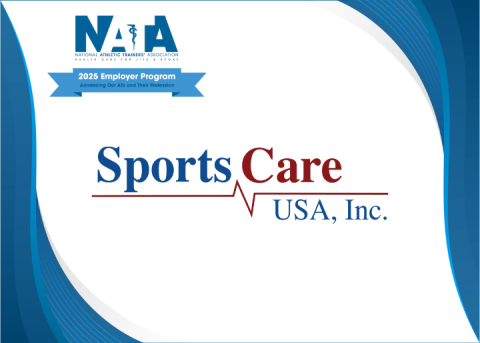
In honor of National Native American Heritage Month in November, the NATA Now blog is highlighting some of NATA’s Native/Indigenous American members and their impact on the athletic training profession.
“Hesci, Vn hocēfetv Jasmine,” said Jasmine Velasquez, ATC, MEd, CTE. “V’nē purse-tate. Erv ’.tteyv Mvskoke Kaccvlke. Nakvftécetv vníckv púnakē estv’lkē.”
For those who aren’t familiar with the Muscogee tribe’s language, Velasquez said, “Hello, my name is Jasmine. I’m from the Muscogee nation. I’m from the Tiger Clan.”
Velasquez is the sports medicine program director at Lawndale High School in Lawndale, California. Now on her sixth year with Lawndale, she began her position as an athletic trainer for two years until an opportunity presented itself.
In 2016, Velasquez noticed that students were hanging around the football practices, waiting for their friends or family to finish, and saw an opportunity to teach them useful sports medicine tips.
Velasquez began going over to the students to teach them how to handle wound care, sprained ankles and the fundamentals of anatomy. She even quizzed them on the information. When more students wanted to join in, it caught the attention of the school district, and eventually, turned into a sports medicine club with more than 200 students interested, Velasquez said.
With the success of the club quickly escalating, the school district asked Velasquez to teach sports medicine. This meant Velasquez held a dual title as teacher and program director because there was no sports medicine curriculum for the students prior to Velasquez’s innovation.
“I had no intention of being a high school teacher,” she said. “The only goal I ever had was to help kids in underserved communities primarily because I came from an underserved background being a Native American, and I grew up different than other kids I went to school with.”
The Start of Something New
From AT to teacher and program director of sports medicine at the high school, Velasquez had to create curriculum from scratch. Velasquez devised a program that facilitates sports medicine courses from freshman to senior year and was considered college intensive and received UC approval. Velasquez even had college professors come in and teach courses to the high school students.
Keeping the program engaging while meeting all the state standards was a challenge for Velasquez.
“When I went to school, we had a sports medicine program you could take when you’re a senior,” she said. “I’m dyslexic, so I didn’t learn to read or write until I was 10. I kept asking myself, ‘How do I keep kids engaged,’ because not every student learns the same. When developing curriculum, I included both science and academically rigorous elements. I often was asking myself, ‘How many hands-on activities can I do in a lesson?’”
The first year of the program in 2017, 200 students signed up. The following year, that number doubled and called for another sports medicine teacher to be hired to take on the overflow of kids, Velasquez said.
Lighting the Spark
On top of the sports medicine program, Velasquez also developed a pre-apprenticeship program where students would try out to be part of an afterschool sports medicine program that supports the high school’s sports teams during practices and games as well as provides leadership to the sports medicine students.
“There are 40 kids on the after school pre-apprenticeship, and they’re committed even in distance learning,” she said. “Last year, there were 22 seniors in the program, and they all went to college. The majority of students are first-generation college students. My heart is so full of happiness to inspire and influence them even in a small way.”
Velasquez talked to the high school’s sports team captains to include the students’ voices in what they would like to see in a sports medicine pre-apprentice. With their feedback, Velasquez created a criteria for the admissions process, which included:
- Students must be able to label body parts and understand the human anatomy.
- Students must be able to assist the head AT in the athletic training facility.
- Students must have a 3.0 GPA or above.
With the pre-apprenticeship program, those accepted also do rotations, similar to an athletic training program at a college, under the direct supervision of the school’s AT.
“The pre-apprentice student will do basic things, but they get a firsthand look at what this looks like and spark their interest,” Velasquez said. “For our demographic, the majority of students are minorities and, in health care as a whole, representation is still predominately white. How can we inspire these kids to be the future of medicine? This is it. Kids love it! They even compete at a national level of sports medicine. It’s a really exciting program.”
Giving Back Beyond School
During distanced learning, Velasquez found a way to incorporate giving back to her Native American community as well as keeping students engaged with sports medicine in a real-life scenario. She tasked her sports medicine students to provide support and education to Native American youth after watching a TV show and connecting with the Blackfeet Nation in Montana.
An ESPN episode followed the Blackfeet Reservation and its boxing club that was designed to teach girls not just how to box but survive. Girls ages 5 to 18 years old attend the boxing club.
Missing and murdered Indigenous women is an epidemic, and Indigenous women are 10 times more likely to be murdered than any other race, Velasquez said.
Velasquez reached out to Donna Kipp, daughter of Frank Kipp, who runs the boxing club, on social media after watching the TV special. Velasquez then learned about Kipp’s torn anterior cruciate ligament and how it would impact her potential junior Olympics career.
The conversation began with Kipp’s rehabilitation plan, and after a few exchanges, Velasquez saw an opportunity to incorporate the sports medicine students, who were quarantined at the time, and broaden their view of life, she said.
Velasquez broke the students into six teams to tackle all the ages of the girls who attend the boxing club. They were tasked with creating a rehabilitation program for a specific age group while understanding the limitations children on a reservation have. The students, for example, provided the idea for knee strengthening exercises for young children to be incorporated through hopscotch and kick ball.
The students presented their rehabilitation plans to Kipp, who asked for copies of the student’s work to integrate into the boxing club on the reservation.
“I wanted to show the sports medicine students that even though they are stuck at home, they’re still able to make a difference,” Velasquez said.

